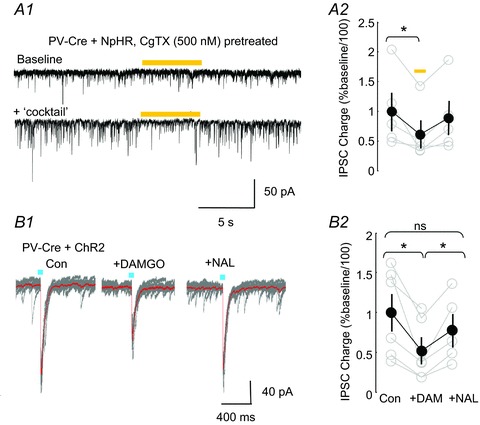Figure 4. Halorhodopsin (NpHR) activation can effectively silence GABA release from strongly activated parvalbumin (PV) basket cell networks.

A1, positive control for ability of NpHR to inhibit PV cell GABA release. In a slice in which PV cells were transfected with NpHR, spontaneous inhibitory postsynaptic currents (IPSCs) were evoked by a cocktail containing 20 μm carbachol (CCh), 400 nm kainate, with a total K+ concentration of 5 mm; IPSCs originating from interneurons, including the PV cells that release GABA via activation of presynaptic P/Q-type voltage-gated Ca2+ channels (VGCCs), were isolated with ω-conotoxin-GVIA (CgTx) pretreatment [to block N-type VGCCs and therefore the output of cholecystokinin (CCK) interneurons among others]. Transient NpHR activation with a yellow light pulse reversibly reduced the IPSC activity. A2, group analysis of spontaneous IPSC charge transfer before, during and immediately after NpHR activation in the presence of the stimulatory cocktail shows significant depression of IPSCs (one-way repeated-measures ANOVA, P= 0.033, n= 5), and there was no difference between the activity before and after the light (P= 0.609). B1, B2, adeno-associated virus (AAV) targets a significant proportion of PV- and μ-opioid receptor (MOR)-expressing interneurons. B1, in a slice in which PV cells were transfected with channelrhodopsin2 (ChR2), blue light evoked synchronous IPSCs (L-IPSCs). L-IPSC amplitudes were reduced by the MOR agonist DAMGO (1 μm) and restored by subsequent application of the MOR antagonist naloxone (NAL) (10 μm). Ten consecutive, superimposed traces in grey and averaged trace in red. B2, group data of DAMGO and DAMGO plus naloxone effects on the PV IPSC. DAMGO significantly suppressed the IPSCs (one-way repeated-measures ANOVA, P= 0.004, n= 6), and this was reversed by naloxone (one-way ANOVA showed no difference between activity in naloxone and activity before DAMGO, P= 0.505).
